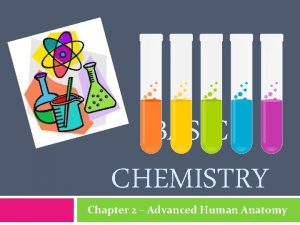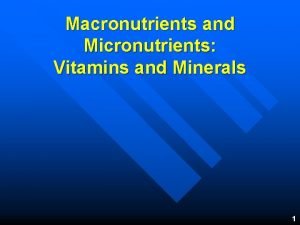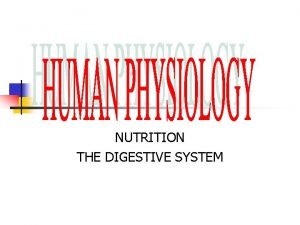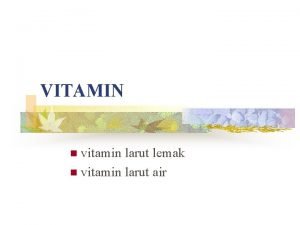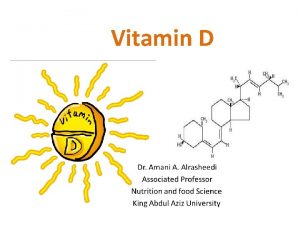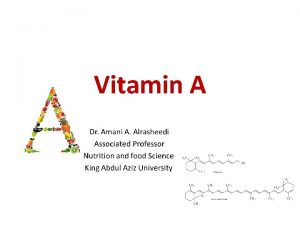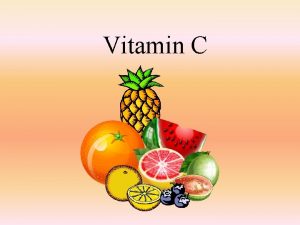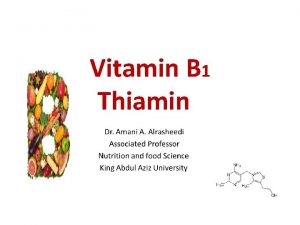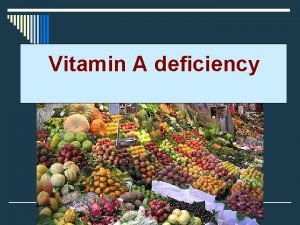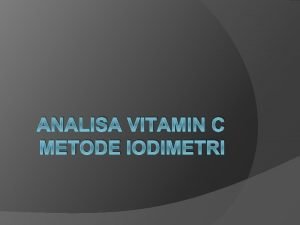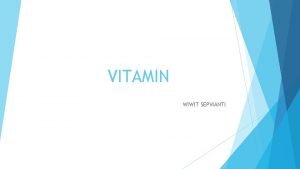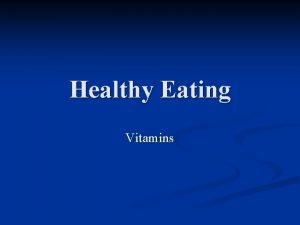Vitamin K Vitamin K is a group of













- Slides: 13

Vitamin K • Vitamin K is a group of lipophilic, hydrophobic vitamins. • They are needed for the postranslation modification of proteins required for blood coagulation, • They are involved in metabolism pathways, in bone mineralisation, cell growth, metabolism of blood vessel wall.

Vitamin K 1 • Vitamin K 1 (phylloquinon) – plant origin • Vitamin K 2 (menaquinon) – normally produced by bacteria in the large intestine • K 1 a K 2 are used differently in the body Vitamin K 2 – K 1 – used mainly for blood clothing – K 2 – important in non-coagulation actions - as in metabolism and bone mineralization, in cell growth, metabolism of blood vessel walls cells. Synthetic derivatives of Vit. K

Vitamin K - function • Cofactor of liver microsomal carboxylase which carboxylates glutamate residues to g-carboxyglutamate during synthesis of prothrombin and coagulation factors VII, IX a X (posttranslation reaction). • Carboxylated glutamate chelates Ca 2+ ions, permitting the binding of blood clotting proteins to membranes. • Forms the binding site for Ca 2+ also in other proteins – osteocalcin.

Physiological Effects of Vitamin K • Vitamin K serves as an essential cofactor for a carboxylase that catalyzes carboxylation of glutamic acid residues on vitamin Kdependent proteins. These proteins are involved in: 1) Coagulation 2) Bone Mineralization 3) Cell growth

Vitamin K Deficiency Deficiencies are very rare in humans except in newborns due to: • insufficient gut bacteria • poor placental transport of vitamin K • low prothrombin synthetic capacity of neonatal liver Newborns routinely receive vitamin K injection (0. 5 -1 mg vitamin K) or 2 mg orally, because human milk is very low in vitamin K (2. 5 μg/L). Bleeding episodes may occur in patients with low vitamin K status on long-term antibiotic treatment (loss of colonic bacteria).

Vitamin K Deficiency GI Bleeding Hemorrhagic disease of the newborn

Vitamin K - deficiency • Deficiency is caused by fat malabsorption or by the liver failure. • Blood clotting disorders – dangerous in newborns, life -threatening bleeding (hemorrhagic disease of the newborn). • Osteoporosis due to failed carboxylation of osteokalcin and decreased activity of osteoblasts. • Under normal circumstances there is not a shortage, vit. K is abundant in the diet.

Sources of vitamin K • • Green leafy vegetables vegetable oil broccoli cereals http: //health. allrefer. com/health/nutrition. html

Coagulation • The transformation of liquid blood into a solid gel • Stops blood flow in the damaged area • Fibrin is the final protein which produces a meshwork to trap RBC and other cells

Vitamin K Dependent Coagulation • Certain clotting factors/proteins require calcium to bind for activation • Calcium can only bind after gamma carboxylation of specific glutamic acid residues in these proteins • The reduced form of vitamin K 2 (vitamin KH 2) acts as a cofactor for this carboxylation reaction. • These proteins are known as “Vitamin K dependent” proteins

Vitamin K Dependent Proteins • • • factor II (prothrombin) factor VII (proconvertin) factor IX (thromboplastin component) factor X (Stuart factor) protein C & protein S Protein Z

Clotting Cascade

 Joining together group theory and group skills
Joining together group theory and group skills Group 2 specialties
Group 2 specialties In group out group
In group out group Y = a(b)^x
Y = a(b)^x Thermal stability of group 2 nitrates
Thermal stability of group 2 nitrates Group yourselves
Group yourselves Anova within group and between group
Anova within group and between group Amino group and carboxyl group
Amino group and carboxyl group Sumner's classification of social groups
Sumner's classification of social groups Definition of social group
Definition of social group Amino group and carboxyl group
Amino group and carboxyl group Group polarization.
Group polarization. Vitamins type
Vitamins type Deficiency of vitamin
Deficiency of vitamin










